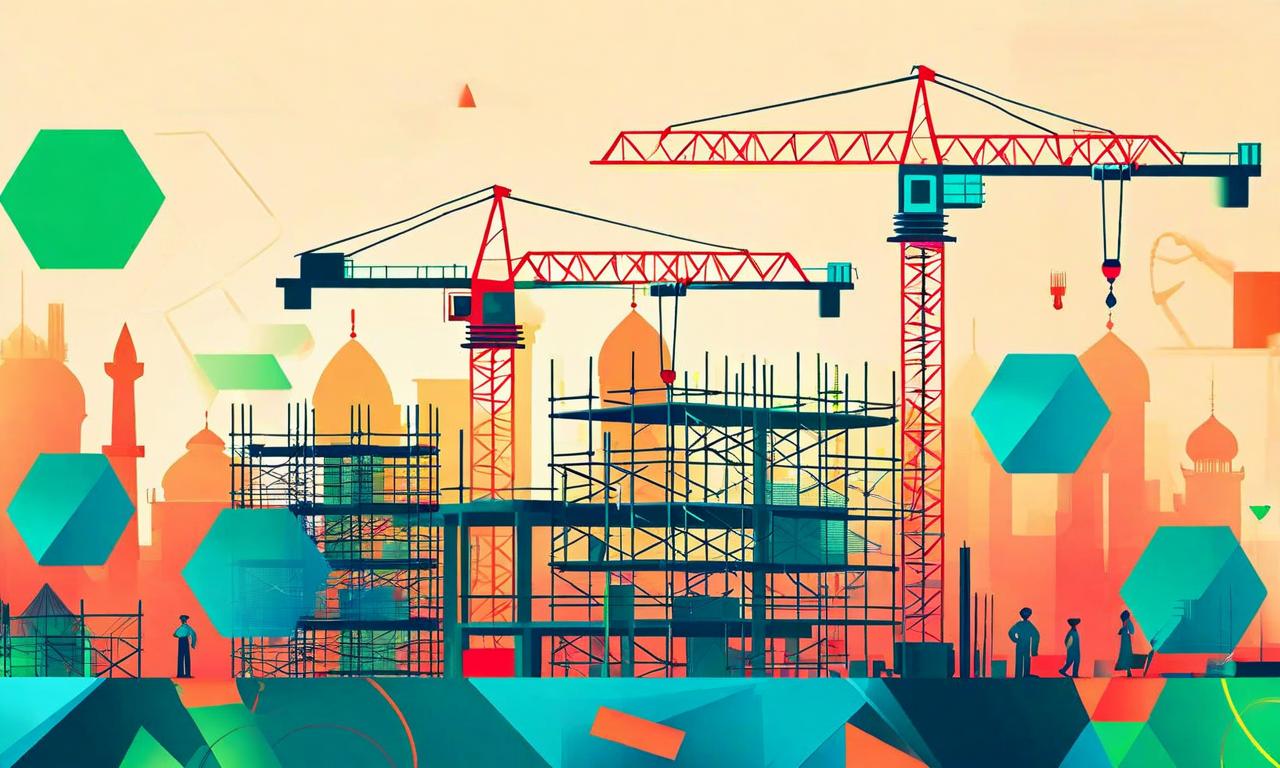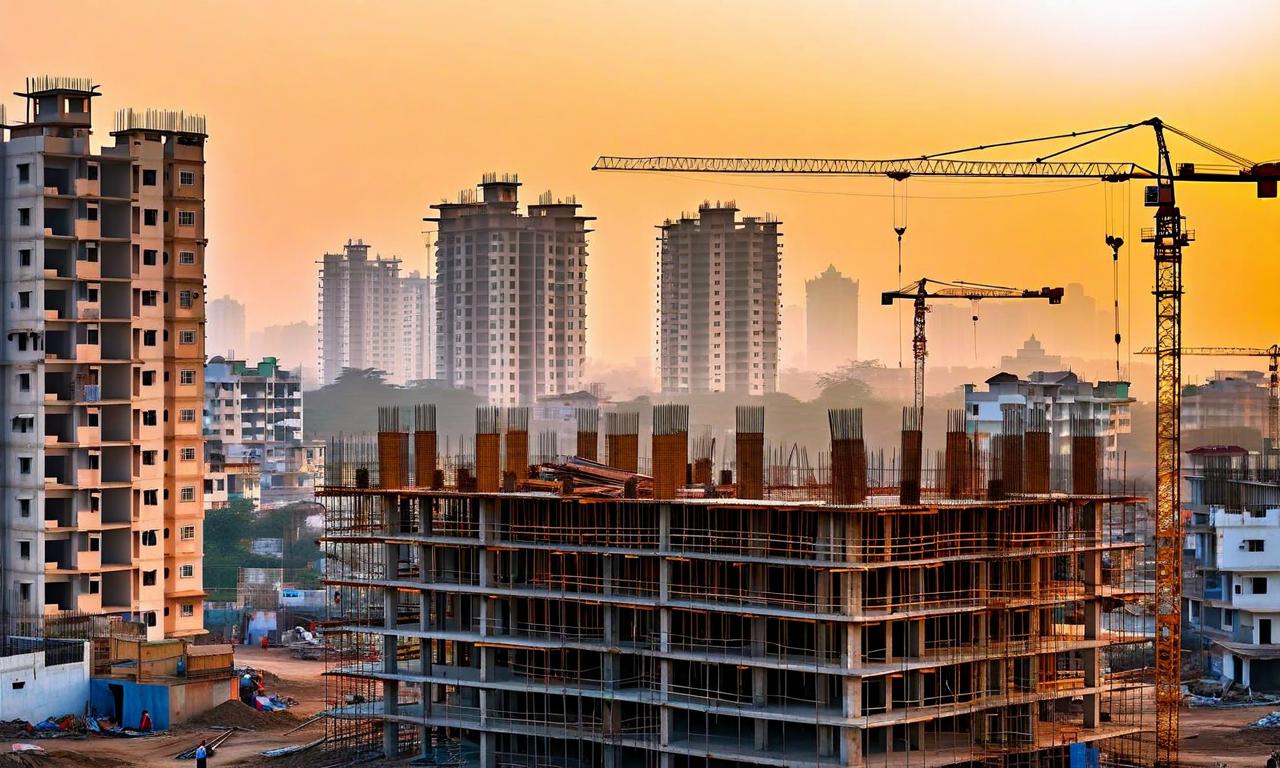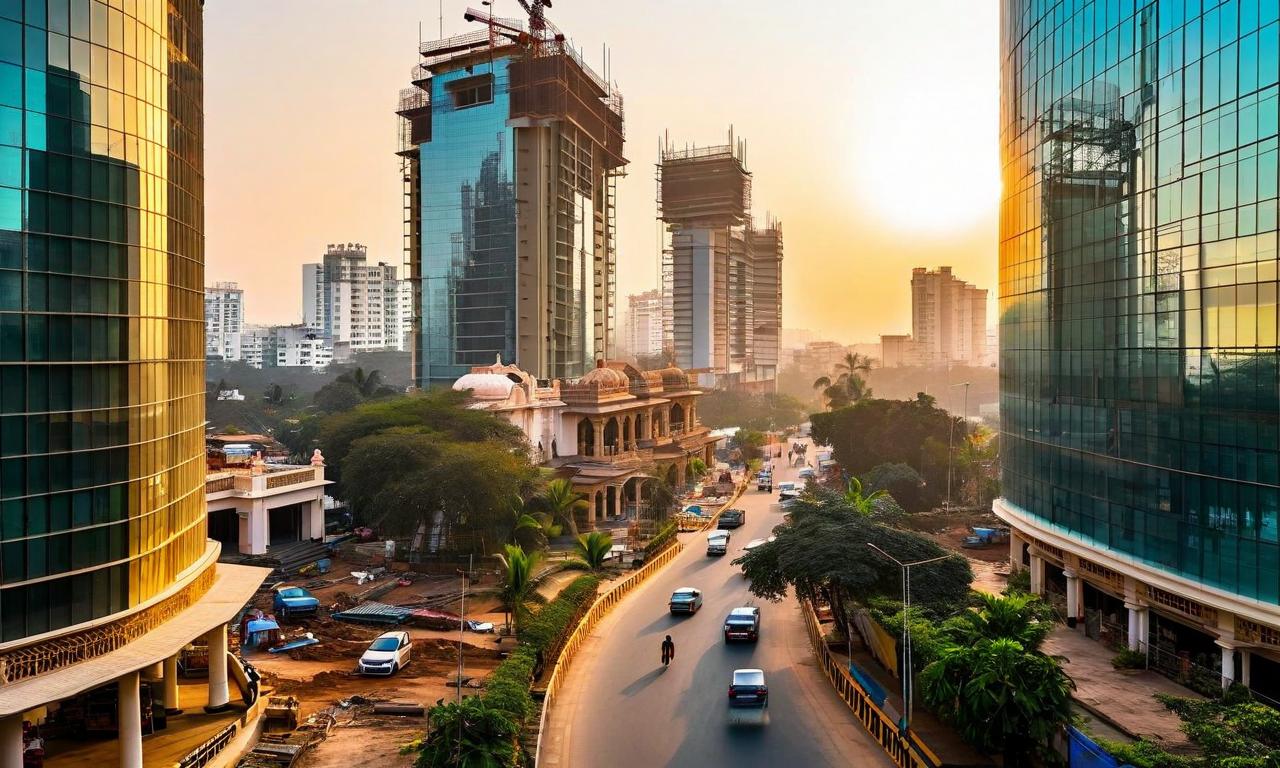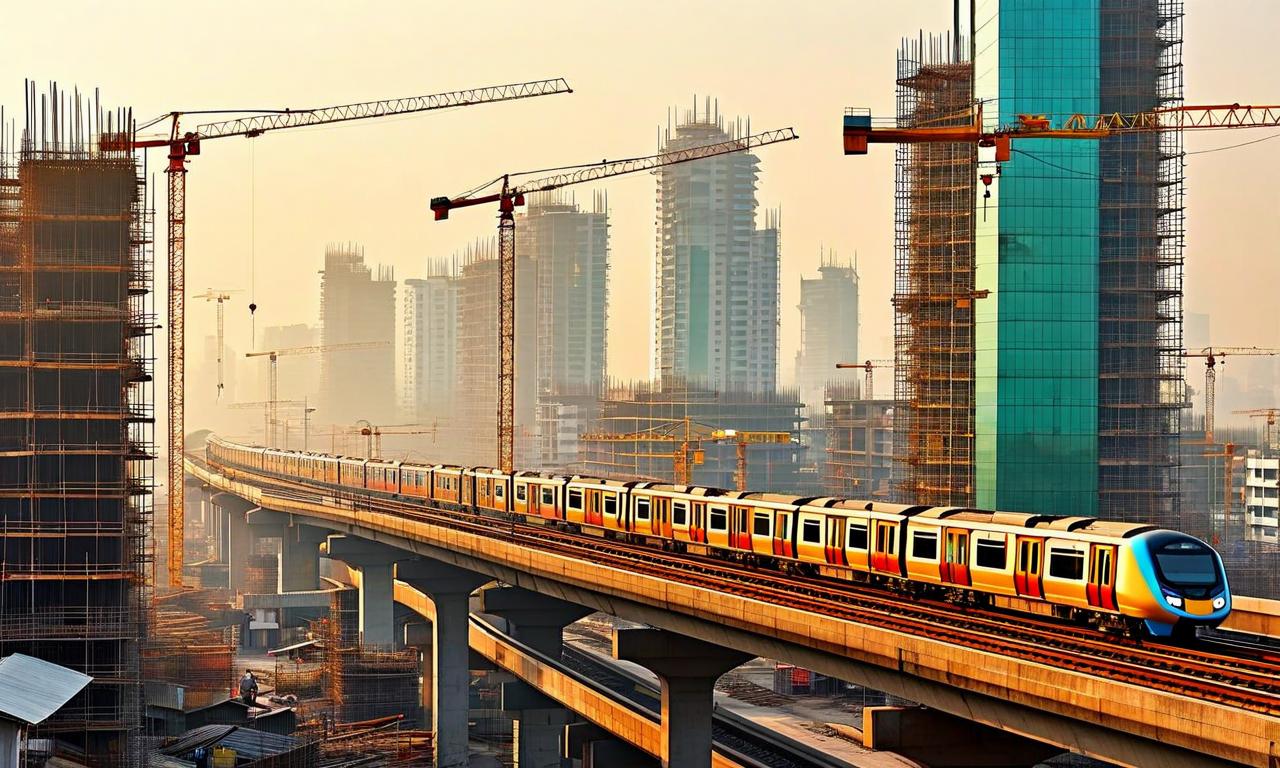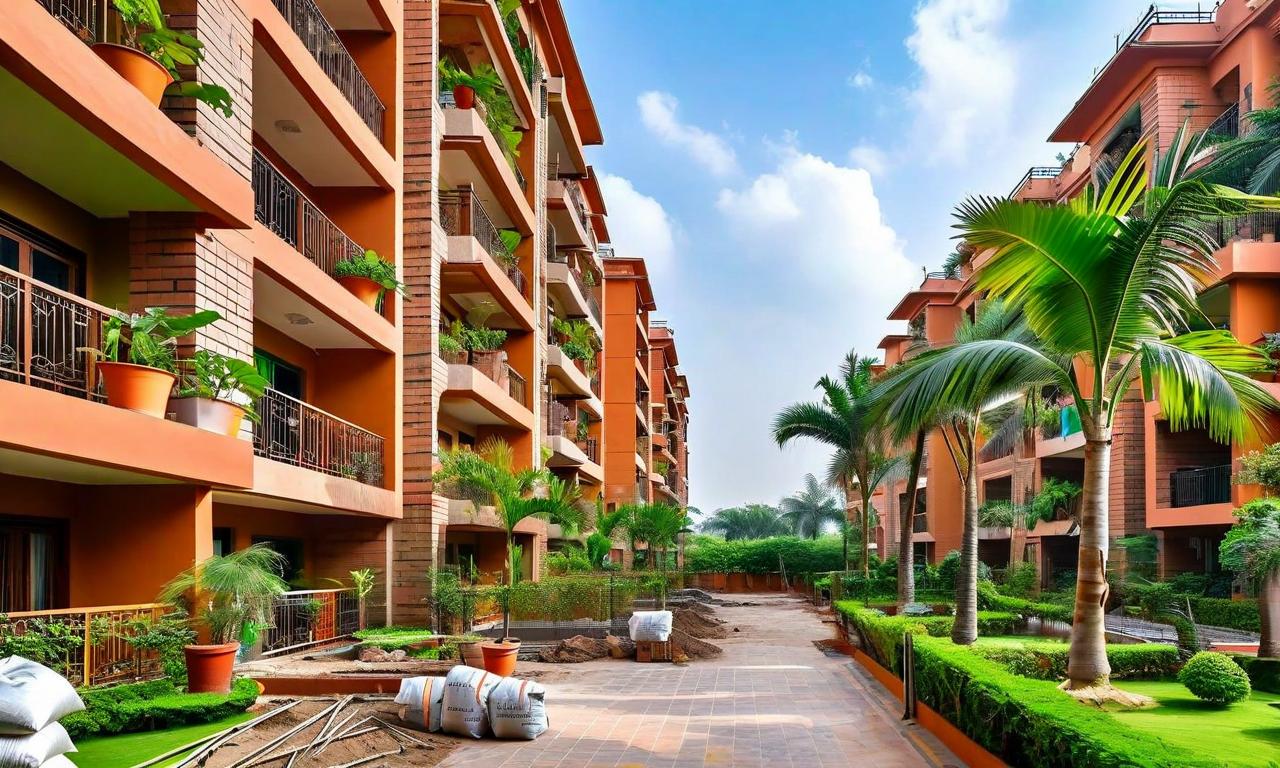Indian Real Estate Boom: Younger Buyers, Infrastructure Growth Drive Market Dynamics
The Indian real estate sector is experiencing significant changes. The average homebuying age has dropped from the late 40s to early 30s, driven by higher incomes, easier credit access, and longer EMI tenures. Infrastructure development is boosting property demand in cities like Goa, Ayodhya, and Dehradun. Major cities remain commercial real estate hubs. The luxury housing segment is expanding, with minimum ticket sizes increasing to ₹3-4 crores. EMI tenures have extended from 15 to 25 years, improving affordability for buyers.
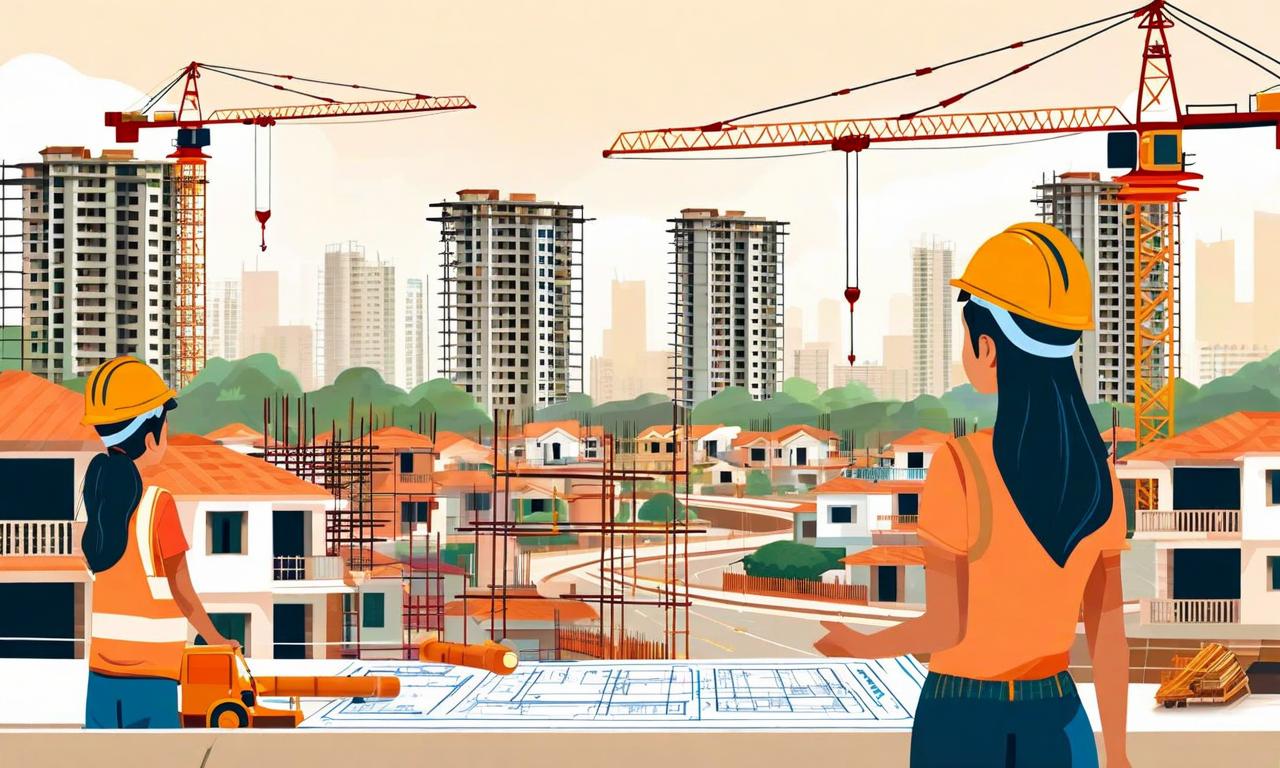
*this image is generated using AI for illustrative purposes only.
The Indian real estate sector is witnessing a significant shift in demographics and market dynamics, driven by changing economic factors and infrastructure development across the country.
Homebuying Age Drops Dramatically
According to Shobhit Agarwal, CEO of ANAROCK Capital, the average homebuying age in India has seen a remarkable shift from the late 40s to the early 30s. This transformation is attributed to several key factors:
- Rising disposable incomes
- Easier access to credit
- Extended EMI (Equated Monthly Installment) tenures
- Growing aspirations among millennials and Gen Z to own homes earlier
Infrastructure Development Boosts Real Estate Demand
Infrastructure improvements across India are having a profound impact on the real estate market in various cities:
- Goa: The introduction of a second airport has reduced tourism seasonality, potentially boosting year-round demand for properties.
- Ayodhya: Improved road connectivity led to a residential project selling out completely within a month, highlighting the impact of infrastructure on property demand.
- Dehradun: The Delhi-Dehradun expressway has resulted in increased hotel occupancy and rates, demonstrating the positive effects of improved accessibility on the hospitality sector.
Commercial Real Estate Landscape
Major cities continue to dominate the commercial real estate sector:
- Primary hubs: Delhi, Mumbai, and Bangalore
- Secondary hubs: Chennai, Hyderabad, and Pune
These cities remain the focal points for commercial real estate development and investment.
Luxury Housing Segment Expands
The luxury housing market has seen significant growth, with minimum ticket sizes increasing from ₹1-2 crores to ₹3-4 crores. This expansion is driven by:
- Gains in the stock market
- Changing lifestyle preferences post-COVID
Extended EMI Tenures Improve Affordability
A notable trend in home financing is the extension of EMI tenures:
- Previous norm: 15-year payment periods
- Current trend: Payments spread over 25 years
This shift has improved affordability for many buyers, allowing them to purchase properties that may have been out of reach with shorter loan terms.
Market Outlook
The Indian real estate sector appears to be in a dynamic phase, with younger buyers entering the market and infrastructure development playing a crucial role in shaping demand across various regions. As cities become more connected and accessible, and as financing options become more flexible, the real estate landscape in India continues to evolve, presenting both opportunities and challenges for developers, investors, and homebuyers alike.
